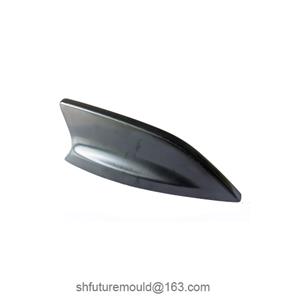Application Scenarios for Three-Plate and Two-Plate Molds
Three-plate and two-plate molds are two common types of molds used in injection molding. They differ significantly in structure, functionality, and applicable scenarios.
1. Application Scenarios for Three-Plate Molds
①.Multi-Cavity Production
When multiple products need to be produced simultaneously, three-plate molds ensure uniform pressure distribution across each cavity through precise gating control. This makes them suitable for batch production of small, complex parts.
②.Products Requiring Precise Gate Placement
Three-plate molds allow the gate to be positioned optimally, such as at the product’s edge or a concealed area, reducing surface defects. This is particularly useful for electronic product housings, medical devices, and other parts with high precision and aesthetic requirements.
③.Thin-Walled or Complex-Shaped Parts
The multi-point gating system of three-plate molds is ideal for thin-walled or complex parts, ensuring even plastic flow and preventing warping or shrinkage issues.
2. Application Scenarios for Two-Plate Molds
①.Production of Standard Parts
Two-plate molds are suitable for most injection-molded products, especially those with simple geometries, such as containers, caps, and toys.
②.Thick-walled or Large Parts
For thick-walled or large products, two-plate molds are simpler and more reliable, helping to reduce mold manufacturing costs.
③.Small to Medium Batch Production
With their simpler design and easier maintenance, two-plate molds are ideal for production scenarios requiring high flexibility, such as small-to-medium enterprises or multi-variety production models.
3. How to Choose the Right Mold Type
The decision between three-plate and two-plate molds should be based on the following factors:
①.Product Design Complexity
Complex parts and high-precision products: Opt for three-plate molds.
Simple parts and large products: Two-plate molds offer better cost-effectiveness.
②.Production Volume and Cost
High-volume production: Three-plate molds are advantageous due to their efficiency and automation.
Low-volume or trial production: Two-plate molds are more economical with lower manufacturing costs.
③.Aesthetic and Quality Requirements
High surface finish and minimal gate marks: Three-plate molds are more suitable.
Moderate aesthetic requirements: Two-plate molds are fully capable.
- Injection Mold
- Automotive Injection Mold
- Electronics & Electrical Injection Mold
- Consumer Goods Injection Mold
- Airplane Components Injection Mold
- Medical Components Injection Mold
- Irrigation Components Injection Mold
- Injection Molds




